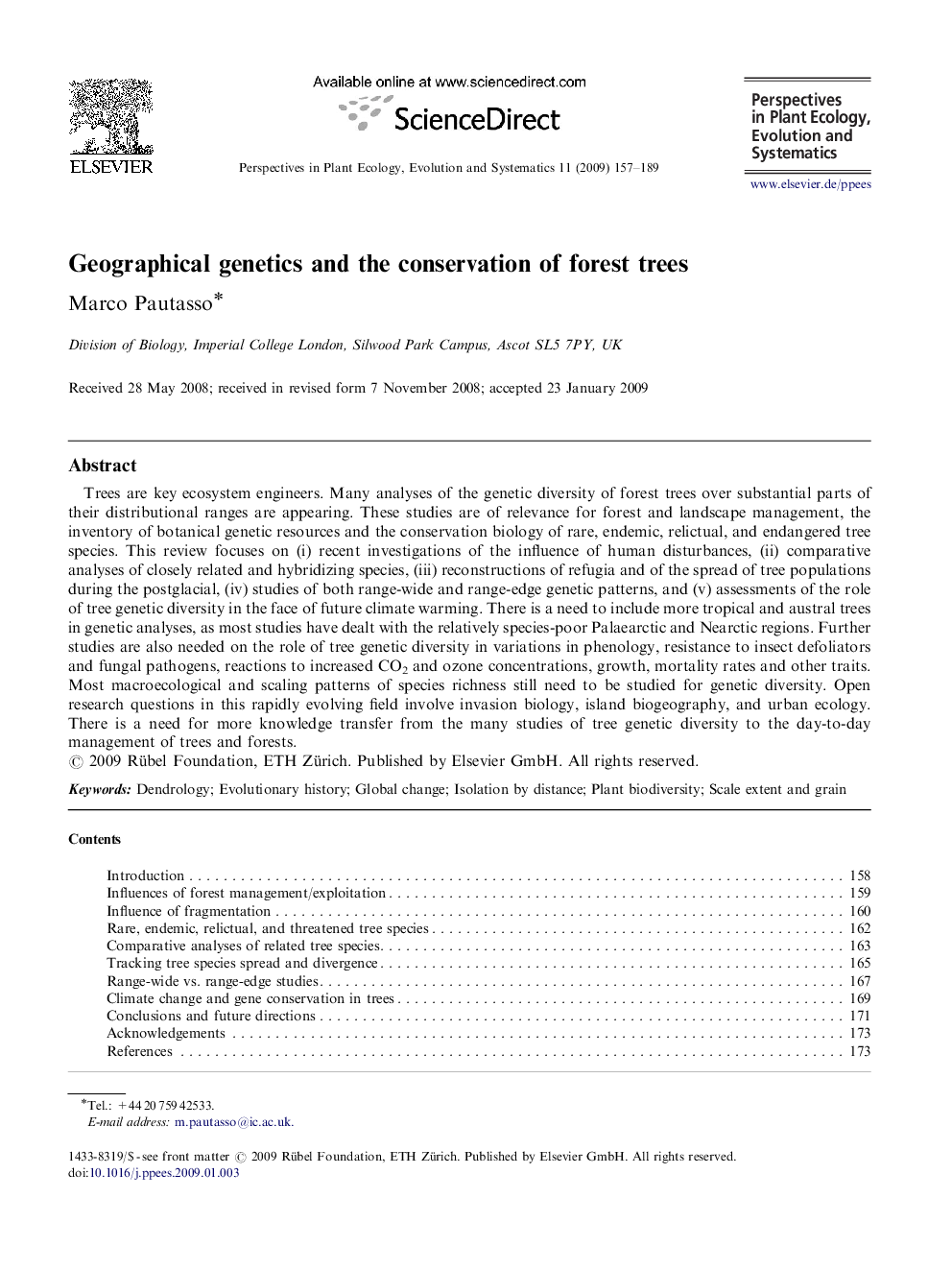| Article ID | Journal | Published Year | Pages | File Type |
|---|---|---|---|---|
| 4401131 | Perspectives in Plant Ecology, Evolution and Systematics | 2009 | 33 Pages |
Trees are key ecosystem engineers. Many analyses of the genetic diversity of forest trees over substantial parts of their distributional ranges are appearing. These studies are of relevance for forest and landscape management, the inventory of botanical genetic resources and the conservation biology of rare, endemic, relictual, and endangered tree species. This review focuses on (i) recent investigations of the influence of human disturbances, (ii) comparative analyses of closely related and hybridizing species, (iii) reconstructions of refugia and of the spread of tree populations during the postglacial, (iv) studies of both range-wide and range-edge genetic patterns, and (v) assessments of the role of tree genetic diversity in the face of future climate warming. There is a need to include more tropical and austral trees in genetic analyses, as most studies have dealt with the relatively species-poor Palaearctic and Nearctic regions. Further studies are also needed on the role of tree genetic diversity in variations in phenology, resistance to insect defoliators and fungal pathogens, reactions to increased CO2 and ozone concentrations, growth, mortality rates and other traits. Most macroecological and scaling patterns of species richness still need to be studied for genetic diversity. Open research questions in this rapidly evolving field involve invasion biology, island biogeography, and urban ecology. There is a need for more knowledge transfer from the many studies of tree genetic diversity to the day-to-day management of trees and forests.
